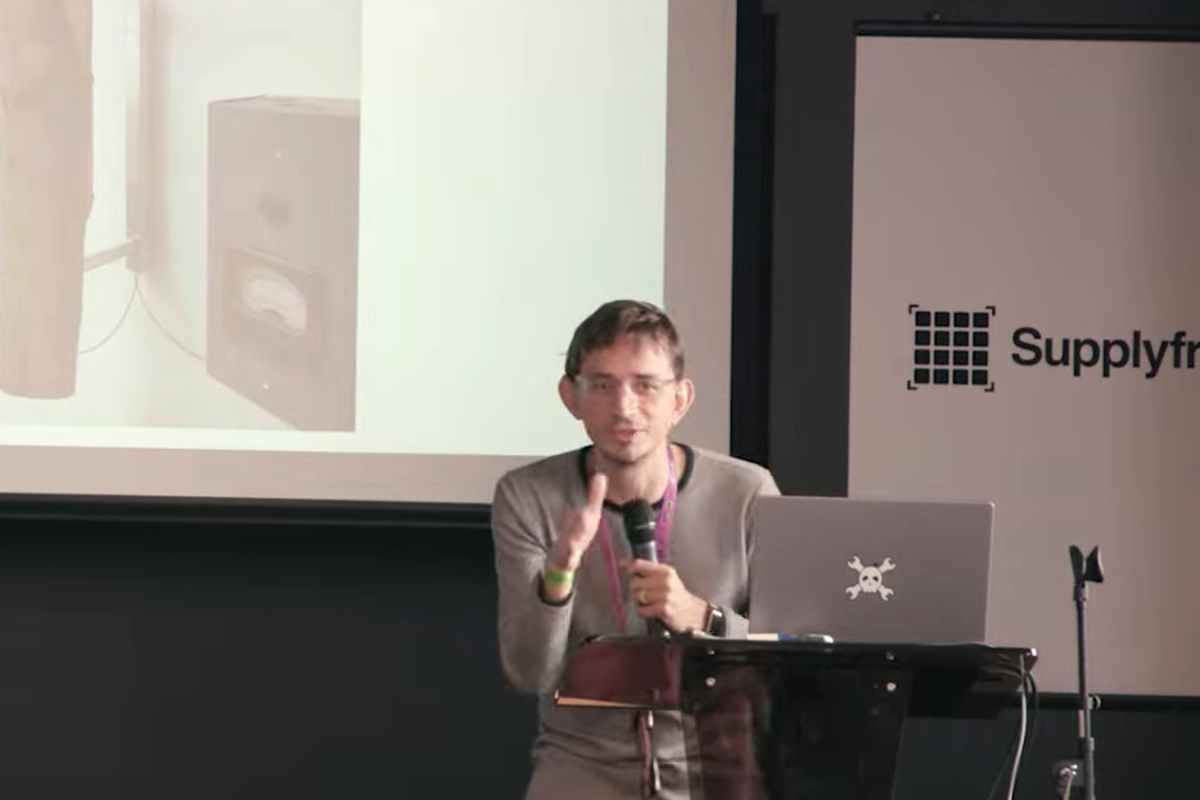Supercon 2022: Chris Combs Reveals His Art-World Compatibility Layer [Hackaday]

[Chris Combs] is a full time artist who loves using technology to create unique art projects and has been building blinky artwork since about a decade now. In his 2022 Supercon talk “Art-World Compatibility Layer: How to Hang and Sell Your Blinky Goodness as Art” (Slides, PDF), [Chris] takes us behind the scenes and shows us how to turn our blinky doodads in to coveted art works. There is a big difference between a project that just works, and a work of art, and it’s the attention to small details that differentiates the two.
Just like the field of engineering and technology, the art world has its own jargon and requires knowledge of essential skills that make it intimidating to newcomers. It’s not very easy to define what makes an artwork “art” or even “Art”, and sometimes it’s difficult to distinguish if you are looking at a child’s scrawls or a master’s brushstrokes. But there are a few distinguishing requirements that a piece of artwork, particularly one revolving around the use of technology, must meet.
What People Expect From An Artwork
One important feature a technical artwork must have is the ability to turn on as soon as it is plugged in, without requiring any further user intervention. [Chris] recommends that it should be plug and play and this might require “not” using a power button if you can get away with it.
An artwork can be hung on a wall, or placed on a tabletop, pedestal or on the floor. A wall hanging artwork requires special hardware for mounting. One easy method is to use a taut wire to hang it from a wall hook. There are several options available for wired mounting, and [Chris] gives a nice rundown of their pros and cons. Another option for wall mounting is by using keyhole slots. You can use metal screw-on plates or add your own CNC or 3D printed slot plates. Sometimes, art galleries will have an exotic hanging system, but with some hacking, it ought to be possible to adapt either a wired mount or keyhole slots to work with them.
If your artwork runs software, then make sure that it never needs a software upgrade. People don’t expect software bugs in their artwork. This means ensuring your code is robust, and any bugs that surface later can hopefully be attributed as features. Dependence on a network connection is another challenge, so it is best to avoid using it. If a network connection is essential, then ensure that the configuration process is easy and foolproof.
Besides the artwork, accessories such as power supply, connectors, and cables need special attention too. Cables need to be offered in multiple colors and lengths. For power connections, barrel sockets and jacks are a good choice, but it is essential to include reverse polarity protection to avoid losing all the magic smoke if someone connects a power supply with inverted polarity. Using the widely available USB-C connector breakout boards is another great alternative, specially since USB-C cables are available in all kinds of colors and it’s possible to negotiate voltage and current requirements as desired. Finally, be careful with the choice of power supply provided with your artwork. An artwork is expected to last a really long time, and the power supply must be easily replaceable. There are quite a number of additional expectations that an artwork must comply with, and [Chris] covers those in the next part of his talk.
Making It Reliable
Artwork ought to function reliably for a long time. This requires special attention to design, construction and choice of materials and parts. For example, on the electronics hardware, it helps to add all the protection you can think of, such as surge suppression MOV’s, PTC thermal fuses, TVS diodes on signal connections and reverse polarity protection on the power input.
Making the software reliable requires some special effort too. If you are using a single board computer such as the Raspberry Pi, make sure to implement a read only file system, or minimise writes to the file system. Simulate various error conditions such as a file system that bloats due to temp and log files, and confirm that your software is able to recover gracefully. Consider how your system reacts to loss of network or failure of an RTC module or maybe a timer overflow in a microcontroller.
What A Venue Expects From The Artist
A venue or gallery will expect your artwork to have a title, a list of the main visible materials used, date of creation, dimensions and batch size or edition size. When corresponding about the artwork, you will also need to share clear photographs, a short biography and an artist’s statement about the artwork. [Chris] offers useful and relevant tips covering all of these requirements.
During the last part of his talk, [Chris] covers the important aspect of marketing and selling your artwork. Manually scouting for venues and finding upcoming shows can be tedious and time consuming, so he shows us some nifty methods of automating the task. He recommends using a combination of RSS feeds, web scraping, and filtering email newsletters to identify target keywords, and then collating all the data in a task tracker which reminds you when it’s time to apply.
Despite using all of these methods, [Chris] has had an acceptance rate of just 15%. So if you plan to walk down this path to artistic glory, be prepared to face lots of rejection letters. [Chris]’s tips and techniques ought to be useful to the growing number of hacker-artists we have seen in recent years who create stunning pieces of technical artwork but find it difficult to make a mark in the art circuit.

![supercon-2022:-chris-combs-reveals-his-art-world-compatibility-layer-[hackaday]](https://i0.wp.com/upmytech.com/wp-content/uploads/2023/04/117504-supercon-2022-chris-combs-reveals-his-art-world-compatibility-layer-hackaday.png?resize=800%2C445&ssl=1)